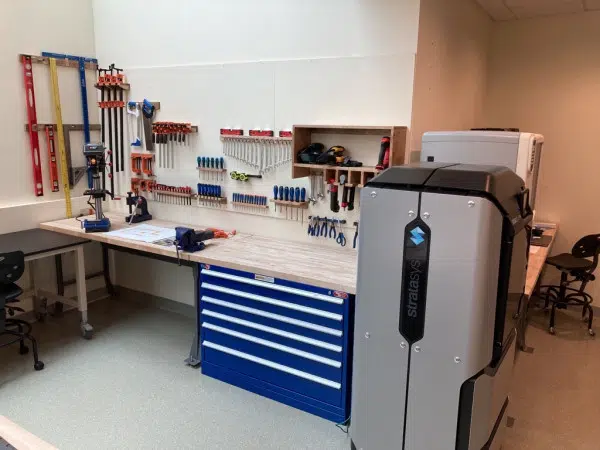If 3D printers are the focal point of your fab lab or makerspace, you're missing out. 3D printers are a common equipment choice for a new fab lab. They are easy enough to use, versatile, and many are low-cost. But by incorporating different types of equipment in a fab lab, you'll give your students more opportunities for learning new skills used in the workforce. Plus, the projects they work on will be more creative and engaging.
The concept of fab labs started around 15 years ago by Professor Neil Gershenfeld from MIT's Center for Bits and Atoms. He developed self-contained digital fabrication shops that could easily be installed anywhere in the world. They contained the latest rapid prototyping equipment, including laser cutters, CNC milling machines, 3D printers, and more. Since then, educational institutions have adopted this concept from the elementary to university level.
Here's a glance at some makerspaces and fab labs at New England schools and universities:
Students explore basic STEM activities with MakerBot 3D printers, Epilog laser cutters, and traditional woodshop tools at the elementary and middle school level. They can experience working in groups for project-based learning assignments using various equipment. And they get exposure to crucial 21st-century skills like problem-solving and critical thinking as they navigate how to use the different technology systems.
Students use a wider variety of more complex equipment at the high school and university levels, including Stratasys 3D printers, ProtoMAX waterjet cutters, Pensa Labs CNC wire formers, Techno CNC plasma cutters, and much more. At this level, students can apply what they've learned across engineering classes for innovative challenges. For example, they can create robotics parts using a ProtoMAX waterjet cutter and then use Stratasys 3D printers to create jigs and fixtures that they program robots to use. Exposure to different software platforms and equipment gives students transferable skills that will benefit them in the industry. Companies use a range of equipment beyond 3D printers in their production, prototyping, and manufacturing processes.
Offering students a range of equipment for a fab lab beyond just 3D printers gives students of all ages opportunities to learn valuable 21st-century skills. They will also be well prepared as they move along in their education and career pathways.


